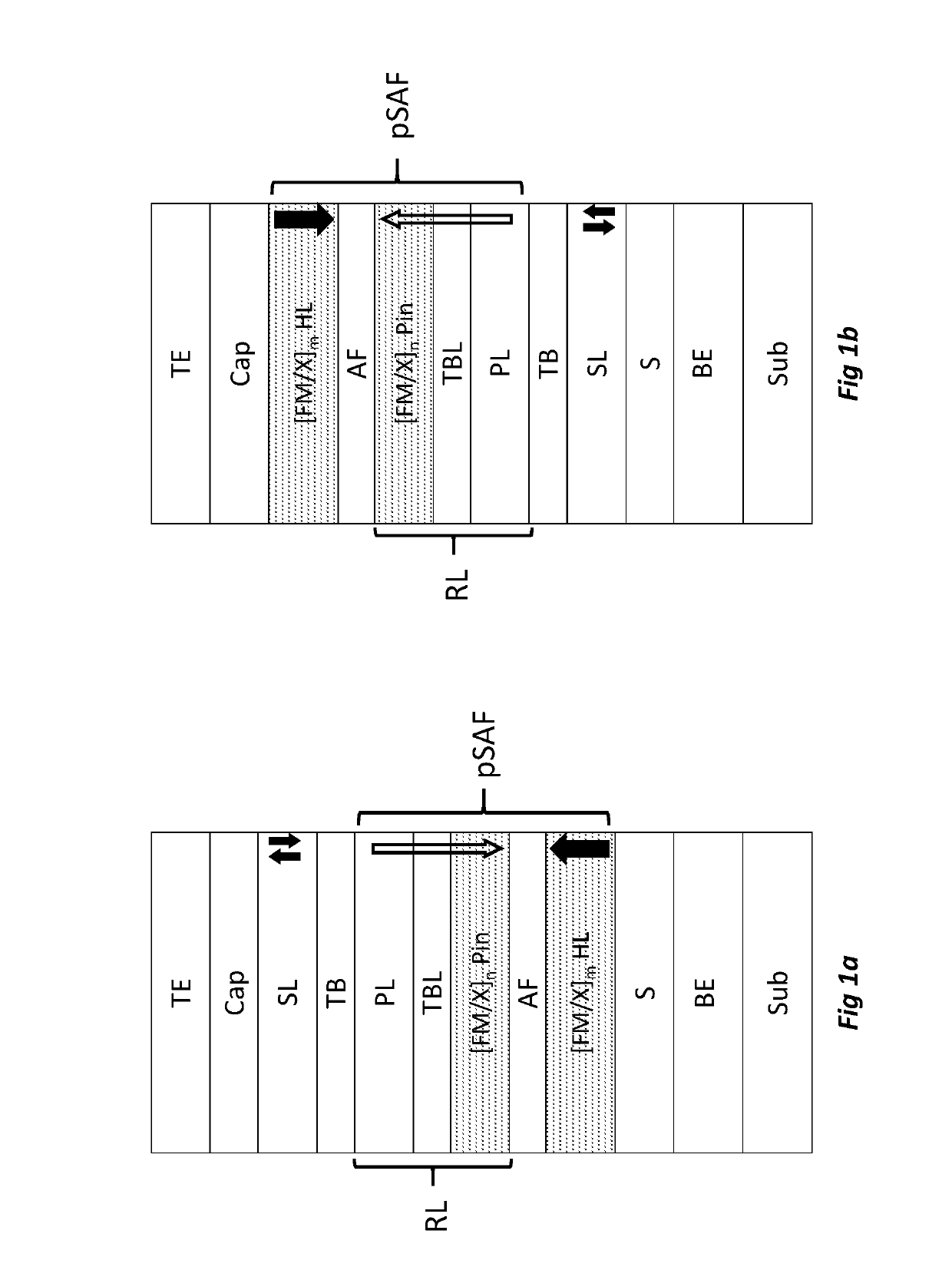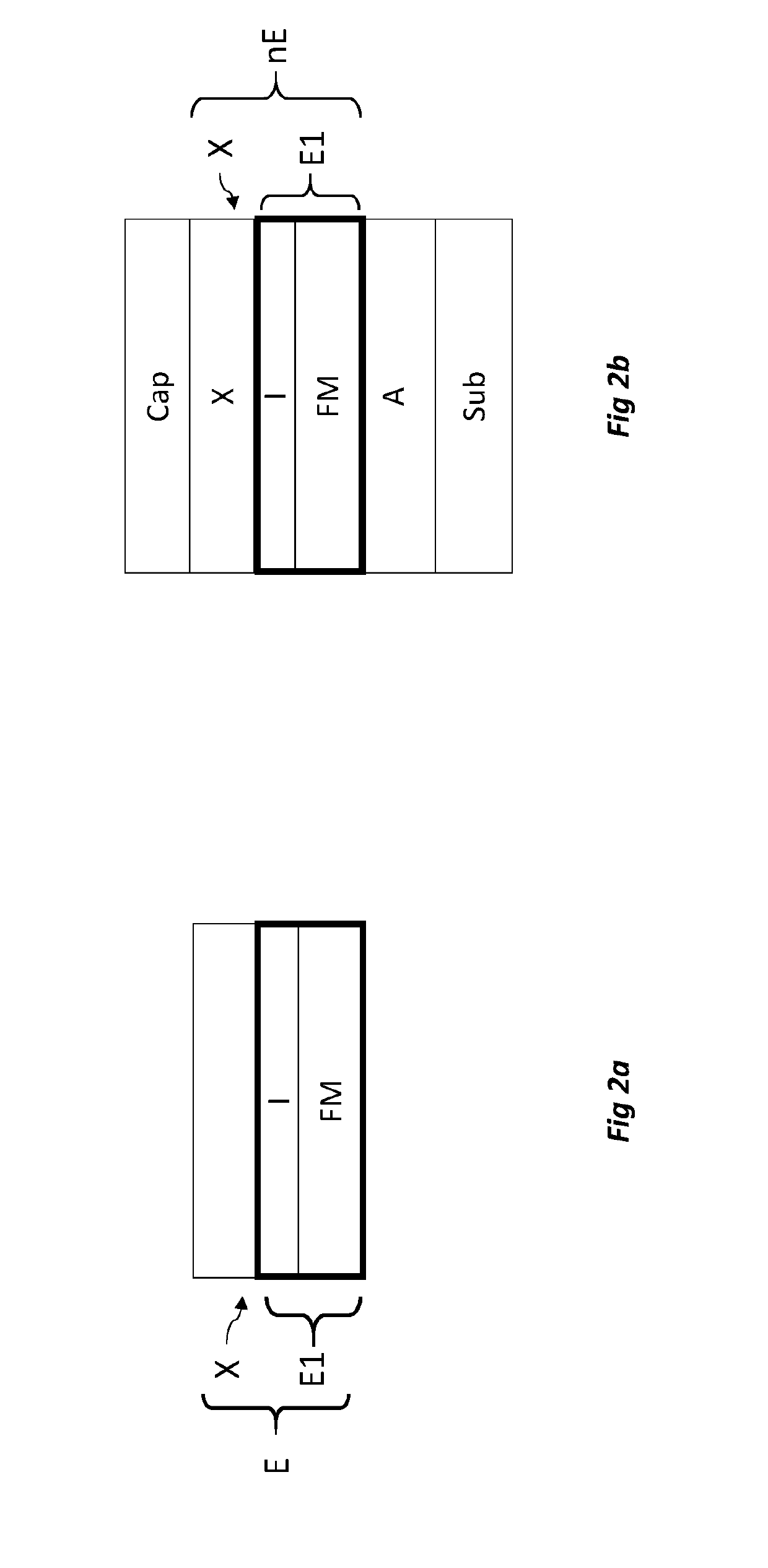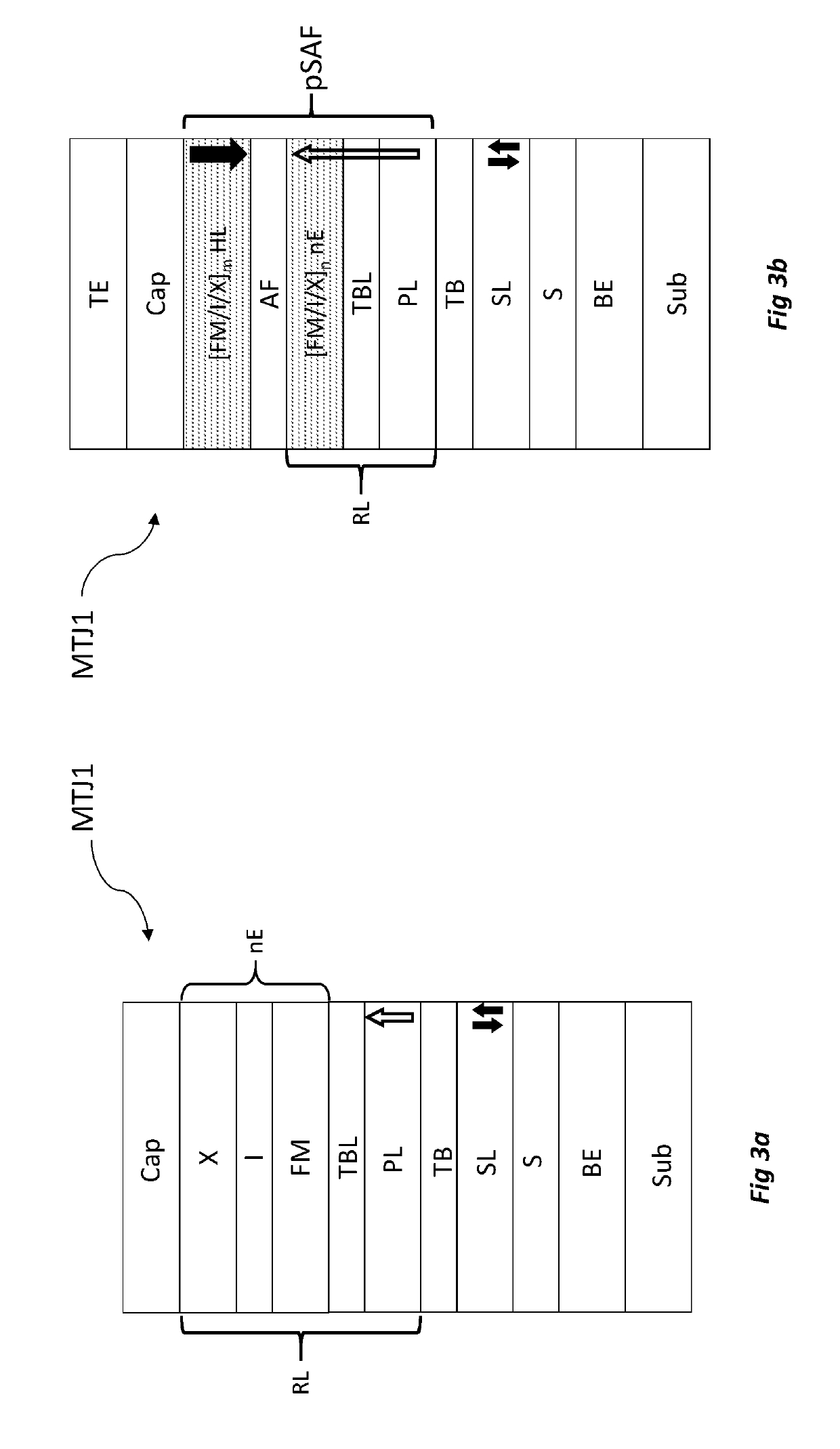Magnetic stack, junction tunnel, memory point and sensor comprising such a stack
a magnetic stack and junction tunnel technology, applied in the field of magnetic stacks, can solve the problems of insatiable thermal stability of magnetic stacks, limited production of sot-mram type memories, and inability to obtain desired crystalline structur
- Summary
- Abstract
- Description
- Claims
- Application Information
AI Technical Summary
Benefits of technology
Problems solved by technology
Method used
Image
Examples
Embodiment Construction
[0145]FIG. 2a shows an example of magnetic stack E according to the invention. The magnetic stack E according to the invention includes a first element E1 and a second element or second layer X, the second layer X being placed above the first element E1. The first element E1 may be a bilayer as is illustrated in FIG. 2a. In this case, the first element E1 includes a first layer FM and a second layer I of the first element. The first layer FM of the first element E1 is a ferromagnetic layer including at least one of the materials belonging to the first group of materials. The first group of materials includes the following materials: cobalt, iron, nickel and magnetic alloys based on these materials. The second element is here arranged directly on the first element.
[0146]The second layer I of the first element E1, also called insertion layer I, is a layer constituted of a refractory metal. The melting temperature of the second layer I of the first element E1 is above 1600° C. and pref...
PUM
| Property | Measurement | Unit |
|---|---|---|
| pressure | aaaaa | aaaaa |
| melting temperature | aaaaa | aaaaa |
| thickness | aaaaa | aaaaa |
Abstract
Description
Claims
Application Information
 Login to View More
Login to View More - R&D
- Intellectual Property
- Life Sciences
- Materials
- Tech Scout
- Unparalleled Data Quality
- Higher Quality Content
- 60% Fewer Hallucinations
Browse by: Latest US Patents, China's latest patents, Technical Efficacy Thesaurus, Application Domain, Technology Topic, Popular Technical Reports.
© 2025 PatSnap. All rights reserved.Legal|Privacy policy|Modern Slavery Act Transparency Statement|Sitemap|About US| Contact US: help@patsnap.com



